One of the upsides of the pandemic lockdown for some has been the opportunity to learn online and to develop new skills. The changes in the economy which will inevitably follow make up-skilling or re-skilling a smart choice.
However, predicting which skills will be in demand, and how to acquire them, is more difficult. In fact, the rhetorics of skills and their relationship to education and employability has been vexed for some time by narratives that include immigration, class, creativity, and an industry of educators resilient to change.
Unskilled, unwelcome
In February, the UK government laid out its proposals for a new ‘points-based’ immigration system. A migrant’s eligibility for an employment visa is set to be determined by their potential earnings and the level of their qualifications.
These plans already had their opponents, but as the debate came into renewed focus in May, and the main bone of contention was the issue of skills. Nurses and paramedics, heroes of the pandemic response, were held up examples of professionals that would no longer be eligible for visas because their starting salaries fell under the government’s proposed salary floor. A widely-circulated tweet prompted outrage: is a radiographer really ‘unskilled’?
This in fact is a misrepresentation of the proposed policies: on that list of healthcare professions, most meet the government’s proposed criteria for qualifications, and earnings.
All the same, the outrage continued. An opposition minister questioned the government: “Are our shop workers unskilled? Our refuse collectors? Of course they are not.” The Joint Council for the Welfare of Immigrants echoed: “bus drivers and lorry drivers, care workers and shop workers, nurses and cleaners – they are not ‘unskilled’ or unwelcome.”
Whether one is skilled and whether one is welcome are separate questions. This appeal against the migration policies relies on a false equivalence: it constructs an analogy and solidarity between radiologists (qualified professionals with extensive training) and waste collectors (the dictionary definition for unskilled labour) on the grounds of their skills, rather than on moral or economic ones. There are of course plenty of other arguments for keeping borders open, for example to increase the diversity in the labour force, for the economic contribution migrants make, on humanitarian grounds, or more cynically because migrants are cheaper to employ.
If to be unskilled is to be undesirable, then skills become highly emotive. We can no longer recognise what skills are, how they are measured, and how to discriminate between them: the discourse proposes that all skills are equally good, useful and desirable. To deny this and to imply that some workers are unskilled is to strike against their dignity.
It’s not what you know
Implicit in the desire for cutting low-skilled migration is the contested belief that a significant proportion of the indigenous population is economically inactive, probably fraudulently in receipt of state welfare, and only just qualified for those low-paid jobs. Ironically, that very same part of the UK population, perhaps having forgotten just how poor the conditions of low-wage work can be, are assumed to have voted to block migrants from competing in the job market in the Brexit referendum.

This narrative is further confounded by stories of qualified surgeons who as immigrants drive taxis or wait tables, which inspire awe and resentment in equal measure. The flip-side of this phenomenon is brain-drain: countries like Bulgaria and Romania lament skilled youths fleeing their homelands for more prosperous EU countries, taking with them their states’ education. In reality, the picture is more complex: it is mostly the lowest-skilled workers who have taken advantage of open borders, and some countries like Poland have been able to convince many of their citizens to return.
And so both anti- and pro-immigration politics produce almost the same attitude to skills: it most likely doesn’t matter what you know, but rather who you are and how hard you’re willing to work at whatever is left over when the better jobs have been distributed.
Home to world-class talent
The national morale is shaped by a country’s place in international rankings of wealth, education, productivity, and of skills. Britain’s marketing collateral maintains that the country is a powerhouse of innovation, ingenuity, and quality, all supported by a skilled workforce. Countries and businesses compete for those skills – one recalls for example the threat of financial services talent fleeing to Frankfurt if the Brexit trade settlement turned out unfavourably.
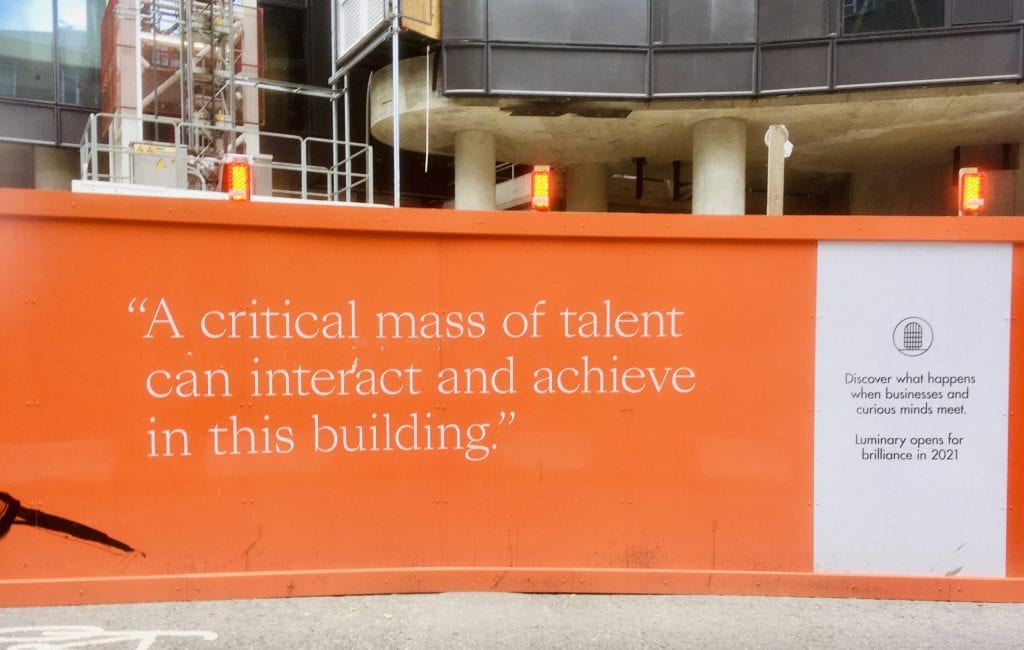
An index of an individual’s suitability for vacancies in the labour market is in principle useful to ensure that the public education system produces graduates with the right level of qualifications and skills to meet the demand of employers. Formally, skills are measured by qualifications and training. A master’s degree is a reflection of a higher level of skills than a vocational qualification obtained at secondary school. Until the 1980s, this was hardly controversial, along with the view that highly educated societies were wealthier, healthier, and happier.
Things got complicated with the collapse of manufacturing and the rise of the service and knowledge economies: workers moved from the assembly line to the office and the office demanded different skills. This move coincided with the 1990s widening of access to higher education which flooded the labour market with graduates. Eventually, the same job could attract – or demand – candidates with a higher level of qualifications. Whereas a typical clerical job in the 1980s could be performed by a worker with college-level education, by the 2000s, it was deemed a degree-level position.
Skills for all and all for skills
This inflation in qualifications demanded does not necessarily indicate that the job itself became any more complex or that university is now the best place to gain the required skills. The rapid spread of office technologies highlighted differences in skill levels between generations of workers, but given the subsequent adoption of the same technologies in everyday life, this gap righted itself without much intervention.
Training and schooling naturally respond to external developments in technology and communication. Many children today arrive at school knowing their way around a keyboard, and undergraduates will have been able to access the world’s knowledge even before arriving at university. Formal education builds on those already cultivated basic skills. Given their head-start, a graduate in 2020 should in principle have wider knowledge or practical experience after three years of learning than a student with the same qualification from 1980, particularly in disciplines which have continued to develop rapidly.
There is, however, a draw-back for this student after university: not all the university-level skills which the graduate brings to their first office job are strictly necessary, and even less so if they end up in a mismatched career. If all that’s needed in the basic knowledge-economy office job are MS Office and Instagram skills, why spend three years studying anthropology? In the long term, this serves to devalue formal education, and eventually a degree course may be worth no more than a secretarial college diploma of the 1970s. As 34% of graduates end up in non-graduate jobs, they may be better off not investing in gradate skills.

Some of this devaluation has already been internalised by the education system. A report a decade ago criticised much of the UK’s vocational training as unfit for its purpose, singling out a formal qualification in ‘personal effectiveness’ which taught 11000 teenagers how to claim unemployment benefits and to use a telephone. An explosion of Mickey Mouse degrees – for example bachelor’s degrees in golf management or cultural studies that include modules on the science of Harry Potter – attracted even more derision than art history studies traditionally did.
Department for good intentions
If we believe that skilled societies are wealthier, then Tony Blair’s mantra of ‘education, education, education’ should still be the orthodoxy today. Instead, governments have struggled to capture the relationship of skills to the economy and society. In the past fifteen years, UK ministries responsible have included the ‘Department for Education and Skills’, for ‘Innovation, Universities and Skills’, then ‘Business, Innovation & Skills’, before splintering into the ‘Learning and Skills Council’ and eventually the ‘Skills Funding Agency’, an arm’s reach, non-political body.
The days of university education for education’s sake may be numbered as the government no longer believes that 50% of young people should go to university. According to the universities minister, the institutions have “dumbed down”, “inflated grades”, and left students – particularly those from disadvantaged backgrounds – with a “debt that didn’t pay off in any sense.” The answer, in the form of the forthcoming T-levels, a new grade of vocational qualifications that lead to careers in human resources, accounting or administration, seems designed to reverse the qualification inflation and to replace a range of degree courses with cheaper alternatives.
Whether this critique of universities is fair is debatable, but a reversal in the higher education policy would complement the forthcoming shake-up of the migration system. Brexit Britain has committed itself to replacing migrant truck drivers and shop staff with indigenous workers, in one clean sweep reducing unemployment and cutting the education bill. In the long run, there will be little reason to keep investing in skills that these low-pay jobs do not require.
The UK government polls organisations to identify which sectors of the economy find it difficult to fill vacancies owing to skill shortages in the working-age population. Contrary to the intuitive view that the most skilled professionals are always in highest demand (no-one has ever met an unemployed pharmacist or lawyer), the industries which report the greatest difficulties in filling vacancies are construction, utilities, transport, and manufacturing, all of which rely on semi-skilled workforces.
Industries with either low-skill work (such as hospitality and retail) or with professional workforces (communications, education, business services) have fared better – but hotels, restaurants and factories have been most likely to look for employees from abroad when they struggle to fill vacancies at home.
Planning for this future, however, is riven with complexities, limited by the accuracy of forecasting of global trade and labour markets, and frustrated by a generation-long lag between investment in skills and its pay-off. The challenge to the economy posed by the Covid-19 pandemic will add to the difficulty of predicting future demand particular skills too.
Four skills good, two skills better
In sociological and population studies, the skill level of a job is a stand-in for its holder’s social class. Not surprisingly, social grade correlates with income, consumption of media, and spending patterns. Some 10-15% of the working age population are in either unskilled, semi-skilled manual jobs or lowest-grad and casual employment – and this proportion has been falling since the 1960s.
In the UK’s historically-conditioned relationship to social stratification, nobody wants to be working-class. Politician John Prescott, suggesting that a participant of his 2009 television documentary was working-, rather than middle-class was rebuffed with a sharp “I don’t work, do I?”
If no-one wants to be working class, then no-one should want to be unskilled. The received wisdom is that education – twinned with hard work and good luck – is the key to social betterment. While the advice remains unchanged, every generation has its own framework for skills and education, and recent slogans in the UK have included ‘achieving excellence’ and ‘raising aspirations’.
What skills should young people aspire to bring to the economy? One might disparage teenagers dreaming of careers as influencers or e-sports competitors: the liberalisation of education has arguably mis-sold dreams of careers rich in choice, satisfaction and reward to recent generations for whom work is a lifestyle as much as a necessity.
Channeling these supply-side aspirations into a demand-led skill and labour market has been challenging. In 2011, the Russell Group of leading UK universities introduced guidance to aspiring students on school subject choices, favouring STEM – science, technology, engineering, mathematics – as facilitating entry to the prestigious institutions and their most prized courses. Top universities were to be once again almæ matres to the professional cadres, training engineers, scientists, lawyers, doctors, while ‘softer’ skills would remain part of the less competitive open market for education. Far from encouraging debate about the kinds of skills society will need in the future, the guidance met with backlash from the humanities education lobby, who resisted the implicit characterisation of their subject matter as secondary. Some arts institutions have sought advantage by aligning themselves with the sciences-first ethos. The Royal College of Art, for example, markets itself as a STEAM leader – adding arts to the STEM canon. The recently updated Russell Group guidance for fourteen year old students now paints all choices as valid, disavowing the institutions’ responsibility for the viability of students’ careers.
It’s what you do with it
The A in STEAM has a legitimate place in contemporary life: one would hardly wish for a world run by and for scientists alone. The generous Covid-19 rescue packages for the arts have highlighted the importance of culture to national aspirations of Germany and France. In the UK, a generous bailout follows two decades of instrumental investments in skills for the creative economy. This has arguably created a concentration of expertise that made the country an attractive place for practitioners and investors alike, making it a powerhouse of film production, game design, advertising and fashion.
By 2000, that ‘everyone was creative’ was a matter of public policy. Creativity was to fuel the growth of service and knowledge economies, and it became the must-have skill. The arts, cultural and media industries have been trading credit for their contribution to the economic value of the creative industries to secure funding and attention, and the relationship between arts education and the wider economy has eluded policymakers for some time.
In a bid to become the skills provider of choice, it was art schools – rather than, say, technical colleges or universities – that presented themselves as experts. What did these institutions equip students graduating into the creative economy with? Given the trend for deskilling that characterised much of postmodern art practice and art education of the 1980s, this question is a paradox at best. Since Marcel Duchamp presented his readymade ‘Fountain’ in 1917, art has been loosening its demand for technical skill, and Joseph Beuys’ proclamation that ‘everyone is an artist’ became true.
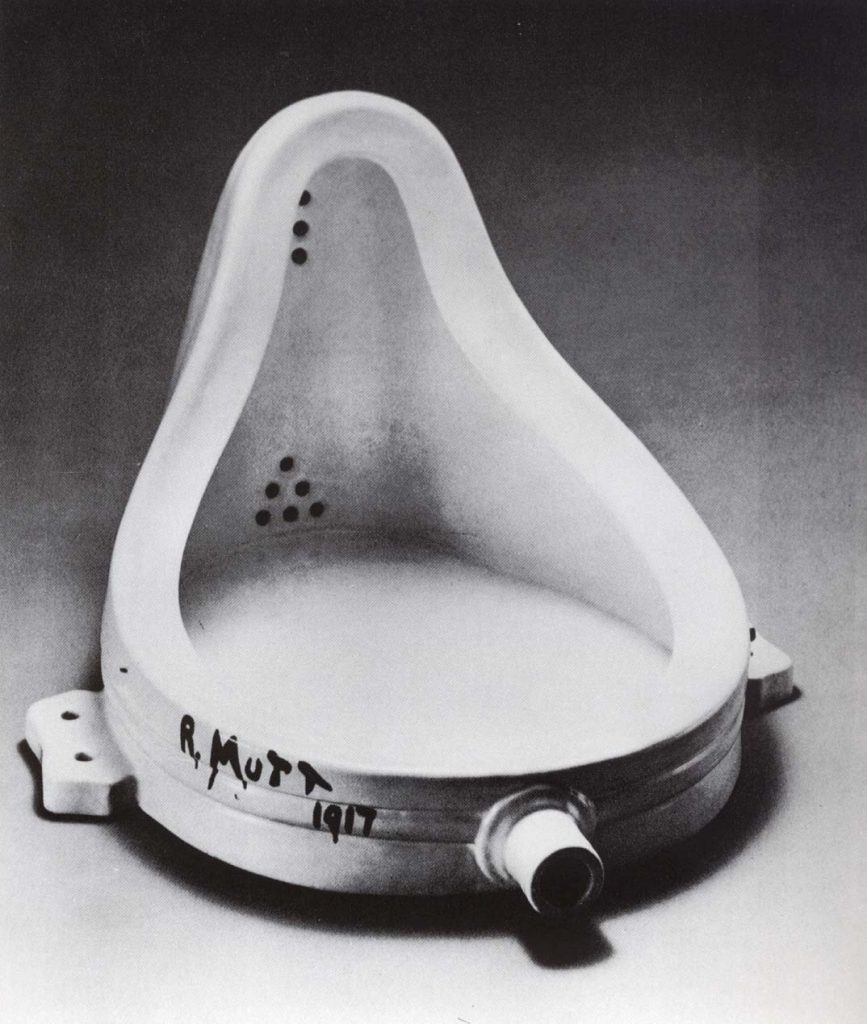
The dominant art school curriculum at the turn of the century favoured concepts over their execution, and context over formal considerations. Art schools expanded their offerings and attracted unprecedented numbers of students, eventually blurring the boundaries between skills and aptitudes.
If university qualifications were prerequisites for many entry-level white-collar careers only as a result of oversupply of skilled workers, is art school-grade creativity really necessary for careers in marketing, PR or events management, let alone the retail occupations which are the top destination of creative arts graduates?
Shortage of creativity in the labour force is not a barrier for employers, but this has not stopped universities and art schools from promoting the idea that investing in creativity is an imperative. Such was the esteem for the creativity and critical thought of arts graduates that in 2004 the Harvard Business Review suggested that “the MFA is the new MBA”.
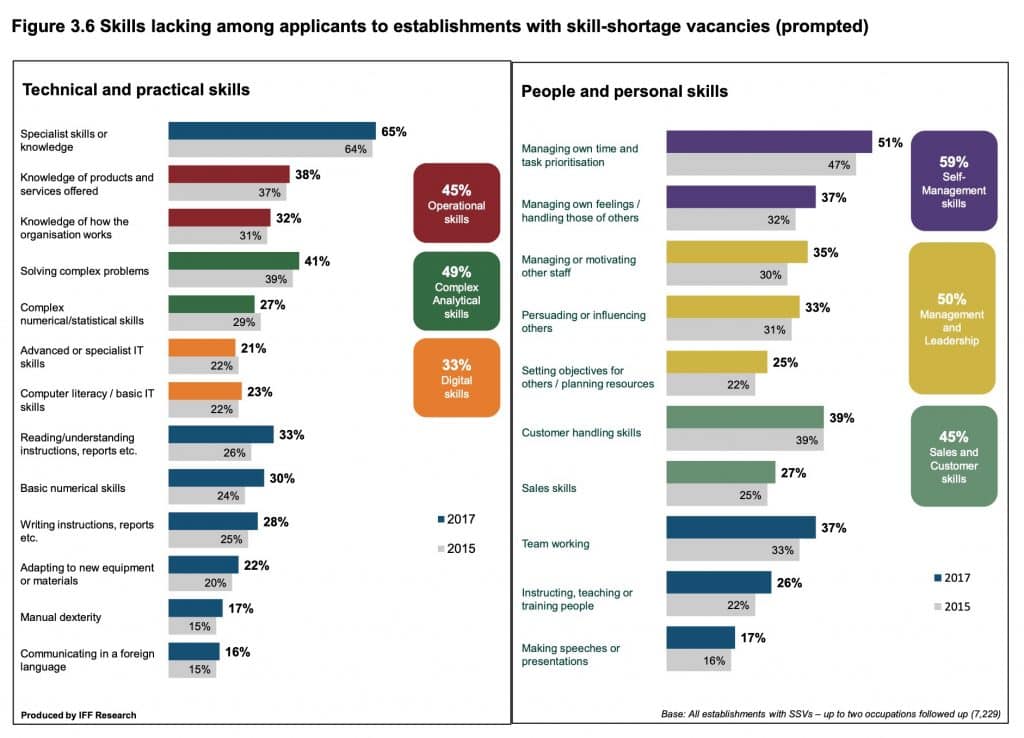
Everyone can call themselves an artist: no trade body membership or accreditation are required. As art school degrees are a straightforward way to demonstrate commitment to the field, art schools obliged with a platter of qualifications. The Diplomas of the 1970s which recognised artistic training morphed into BA (Hons) of the 1990s. Today, an MA is the entry-level qualification for jobs in the creative industries, with PhDs not uncommon amongst practicing artists.
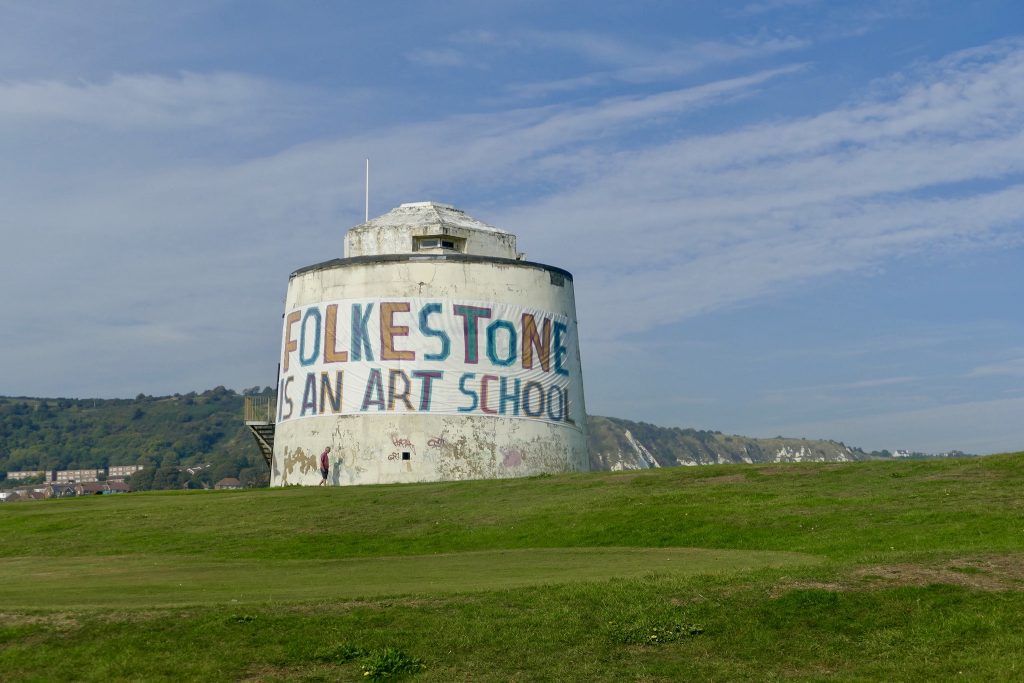
The diversity of postgraduate specialisms has grown in recent years, indicating that universities have begun taking their responsibility for the employability of their graduates seriously. Where creative studio practices of art, design, fashion and photography were at the centre of most programmes, disciplines such as ‘art and internet equalities’, ‘photography and social practice’ or ‘data science for the creative industries’ have expanded the field.
Art is skill
The sculptor Eric Gill maintained that skill is crucial to art – “that it is the first meaning of the word.” In a world where creativity is universal, this view fell out of fashion as much as Gill’s work has in light of revelations of his personal life.

The loss of traditional skills is both the story of and material for contemporary art. Belgian artist Eric Van Hove’s work in Morocco is a lament of the disappearance of technical skills and experience with the passing of the country’s last generation of craftsmen. To avert this extinction, Van Hove employs a full workshop of carpenters, smiths and leather workers in an attempt to create a home-built alternative to the imported motorcycles ubiquitous on the country’s roads.
In this so far unsuccessful project, the artist is not the master craftsman, but its CEO and shareholder. And perhaps it is the business world that offers the most important skills to today’s artists; a traditional studio and gallery practice relies as much on fluency in marketing, financial management and contract law as it does on the quality of ideas and artistic technique.

Art school students – increasingly seeing themselves as customers and conscious of the value of their education to their future careers – have placed pressure on schools to provide ‘professional’ training. The response has been mixed, and continuing development opportunities for artists are scarce. All the same, artists are finding ways to practice: in the US, almost 40% do not have degree education at all.
Skills are cheap
Throughout the history of avant-gardes art movements, art has made claims of its importance in shaping not only the communal imaginary, but also providing blueprints for social and political changes. Today’s art sees its social mission as core, and even the most commercial of art practices describe themselves as political. This ‘social turn’ coincided with developments in cultural policies that allowed the artist to take central positions in civic society.
It is not long ago that the goals of social arts practice, such as education, facilitating dialogue or driving urban renewal, were the domains of teachers, social workers and architects. Today, artistic projects aimed at building community cohesion, encouraging resilience, or ameliorating social conditions are the mainstay of cultural providers. Arts Council England’s strategy that makes funding for arts institutions contingent on the positive social effects of their work is indicative of a drive to replace the traditional guards of social order with the free-form rebellious creativity of artists.If art is to appropriate the work of other professions, shouldn’t it at least pay heed to the skills which drive them? Artists don’t think so: a recent survey lists only the softest of skills in play: respect, influencing, diplomacy, leadership. In composing a lexicon for art’s utility, Steven Wright notes the fundamental difficulty: “to speak of artistic competence is to sound suspiciously conservative, if not downright reactionary”.
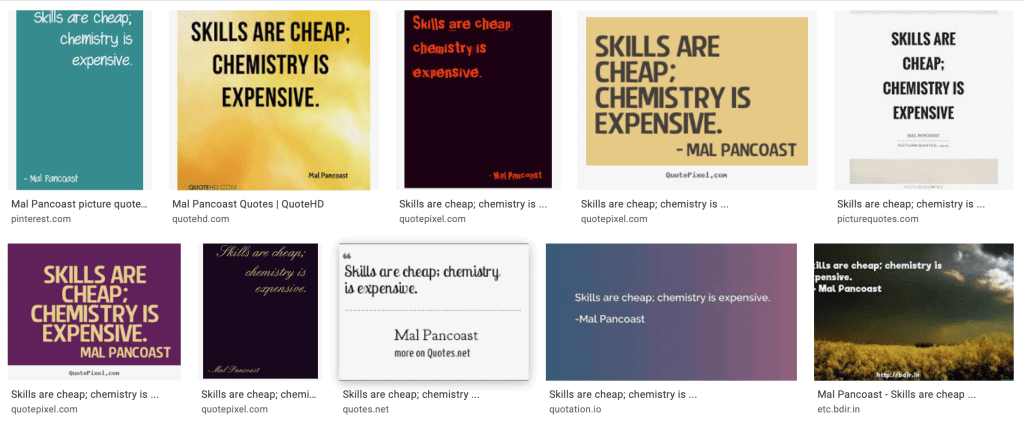
Nurturing creative instincts is arguably cheaper than technical training. It’s cheaper than chemistry, too, and this alone renders a nuanced debate on skills useless. So much so that Mal Pancoast, to whom the enigmatic, yet believable quotation in the title of this essay is attributed online, on inspection turned out to be fictional.

